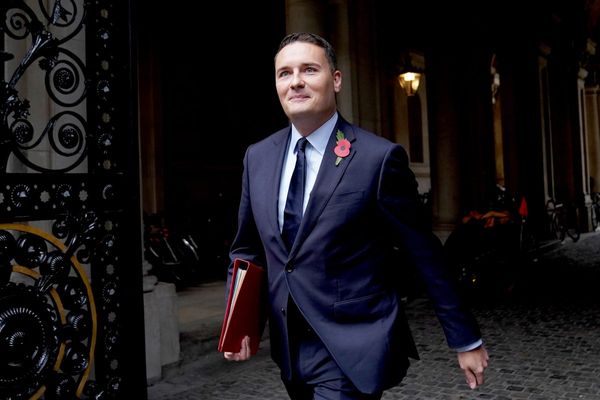ANAHEIM, Calif. — Despite continued — and mounting — questions about her health, Sen. Dianne Feinstein‘s office recently said she plans to finish out her term in the U.S. Senate.
But recent revelations about complications she’s suffered from her shingles diagnosis, including a brain inflammation — coupled with an exchange she had with reporters in the U.S. Capitol in which she appeared to be confused about her absence — have only underscored the possibility that those plans could, at some point, change.
At 89 years old, Feinstein is the oldest sitting U.S. senator, a trailblazer for women in politics who is back in Washington, D.C., working with a “lighter schedule” after a monthslong absence.
Her office said Thursday that she plans to finish out her term, which ends on Jan. 3, 2025.
Should that change in the next 600 or so days, it would be up to Gov. Gavin Newsom to appoint a replacement — an unenviable task amid a Senate race well underway and with promises already made.
“It’s an absolute no-win situation for Newsom, one of his own making,” said Dan Schnur, a former campaign consultant who teaches political messaging at UC Berkeley and USC.
It wasn’t too long ago that Newsom had another Senate seat to fill: Kamala Harris’ when she became the vice president. The governor tapped Alex Padilla, California’s secretary of state, to fill the role in 2021, making him the first Latino to represent California in the Senate.
Shortly thereafter, Newsom was asked if he would commit to appointing a Black woman to replace Feinstein if she were to leave her seat prematurely.
He said yes.
That commitment was a “game-changer,” said Aimee Allison, founder of She the People, a national organization that supports women of color in politics.
“There’s no expectation on our end that he would not fulfill that promise, particularly if you look at the significance of this decision nationally, how important it is,” Allison said. “It would complicate his legacy not to fulfill his promise.”
For now, Newsom doesn’t have to worry about such a decision and the ramifications of his choice to replace Feinstein. But from selecting a “caretaker” to essentially tipping his hand amid an ongoing campaign, here’s a look at what options he eventually could face.
The big three
At first glance, there are three major Democrats who have made it certain they’d like to take over for Feinstein: Reps. Barbara Lee of Oakland, Katie Porter of Irvine and Adam Schiff of Burbank.
But picking one of the trio would essentially be an endorsement in an open election, and Newsom has said he doesn’t like to get involved in “Dem-on-Dem” races.
Lee would, however, fulfill that 2021 promise to appoint a Black woman — a move that wouldn’t come without some conundrums, especially since Newsom is widely considered to be mulling a presidential bid, even if that campaign is still a few years out.
Should Lee, 76, be his choice, it’s safe to assume she runs for reelection in 2024, setting her up in a better position to win as the incumbent.
“Schiff and Porter have some very powerful supporters with long memories,” said Schnur. “Offending a Schiff supporter in Nancy Pelosi or a Porter backer like Elizabeth Warren doesn’t do him much good.”
And neither would angering the Black community if he snubbed Lee, Schnur said.
There’s also the Southern California ripple effect a Lee appointment would make. It’s entirely possible Schiff, 62, or Porter, 49, could decide to forgo a 2024 Senate race and vie for reelection to their respective congressional seats instead, throwing wrenches in already contentious and crowded races for their seats.
The caretakers
Another politically treacherous route for Newsom would be to appoint a “caretaker” for the seat — someone who could fill the position until California voters choose a new senator in 2024.
“If I were advising him, it would be to pick a caretaker, a qualified caretaker, and someone who is not interested in the open seat,” said Stephen Stambough, a Cal State Fullerton political science professor who specializes in political behavior and elections.
“Senate offices have a lot of really skilled, experienced staff members,” he said. “A caretaker retaining the same staff — or a significant portion — would be the easiest transition, and then California voters would have to weigh a decision.”
There is certainly a bevy of names floating around of who Newsom could or should choose, including former Gov. Jerry Brown, who once made an unsuccessful bid for the U.S. Senate, or former San Francisco Mayor and longtime Assembly Speaker Willie Brown, a staunch defender of Feinstein’s career and legacy, even of late.
And of course, there’s Pelosi, a longtime friend of Feinstein who has rebuffed calls for her to resign from office. That relationship was further highlighted in recent days when Politico reported Pelosi’s daughter is part of Feinstein’s caretaking entourage back in the Capitol, leading a spokesperson for the former speaker to reject speculation Pelosi could be attempting to influence Feinstein’s decisions about her future.
These three options aren’t much younger than Feinstein, who will turn 90 next month — Willie Brown recently turned 89, Jerry Brown is 85 and Pelosi is 83. Any of the three would become the second-oldest member of the Senate behind Iowa’s Chuck Grassley, 89.
“There is no shortage of village elders who he could give the seat to as a career capper,” Schnur said. “That would allow him to preserve his neutrality in the Senate race, but it would almost certainly infuriate many African American leaders.”
Newsom could appoint a Black woman, such as San Francisco Mayor London Breed, Los Angeles County Supervisor Holly Mitchell or Rep. Maxine Waters. Supporters of Waters, who is 84, could see an appointment as a tribute to her political service whereas for Breed, 48, it could be another stepping stone in a career path already following Feinstein’s.
Secretary of State Shirley Weber and Controller Malia Cohen are also options — and ones with a twist. Newsom could appoint either of the state officeholders to head to Washington for a short time while putting placeholders in their seats for them to return to. For Weber, that might be a bit trickier since she oversees California’s elections, Schnur noted, but at 74 years old, it’s entirely possible she could use a Senate position to bookend her own political career.
But to Allison, who is heavily involved in California politics, this idea of a “placeholder” is only a “half-commitment” to supporting Black female leadership.
“With everything that’s at stake — voting rights, abortion rights, climate, it goes on and on — I would hope that the governor would not prioritize political neutrality over someone who knows D.C., has experience representing us Californians and who we trust to get the job done from day one,” Allison said. “That requires not doing something in half-measure, not this temporary thing, but to support Barbara Lee, to position her to represent us and to win reelection.”
“Anything less than that would be less than a full commitment to making sure that we have representation in the Senate.”
The outlier
If there’s one constant about politics, it’s the unpredictability.
And while most experts believe this is a long shot, there is still the notion that Newsom could appoint none other than himself, using that position to launch a bid for the presidency.
“The next three years look like they’re going to be pretty nasty for him,” Schnur said. “The state has an immense budget deficit, there are continuing housing and homelessness and education crises. Maybe the Senate turns out to be a better way for him to get to the White House.”
“It would be a really risky thing to do,” Schnur said, pointing to the chance he’d lose the support of Black voters if he went back on that 2021 promise. “But the one thing we know about Gavin Newsom is that he’s very ambitious.”







